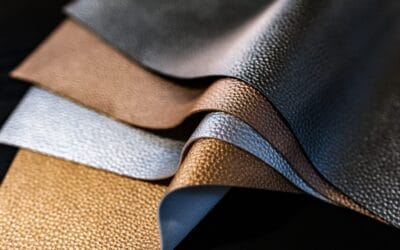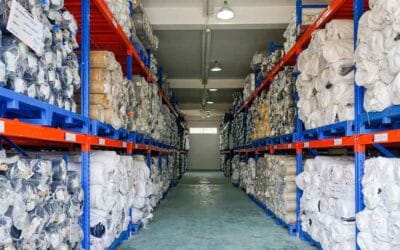INTELLI JEWELRY| RFID TECHNOLOGY IN JEWELRY
We Bring Jewelers Together with RFID and Keep Jewels Safe!
In the jewelry industry, it is the optimal solution for tracking and managing inventory, verifying and securing valuable pieces.
RFID JEWELRY SYSTEM
GENERAL FEATURES OF THE SYSTEM
One of the key benefits of RFID technology in jewelry is improved inventory management. With RFID tags, store associates can quickly and easily scan the entire store to see what products are in stock and where they are located. This can greatly reduce the amount of time and labor required for inventory management and can also help reduce loss and loss due to theft. Another benefit of RFID technology in jewelry is increased security.
RFID tags can be programmed with unique identification numbers that can be used to track the whereabouts of specific items. This can be particularly useful for high-value items such as diamonds or gold.
You can leave the stress of count times behind.
You can instantly detect missing products on the shelves.
You can perform untouched store stocktakes more frequently and a hundred times faster.
You can make your sales without interrupting your sales during counting and save time.
You can make your counts with less personnel cost.
How does the RFID JEWELRY SYSTEM work?
- RFID Tags: A small RFID tag or chip is implanted in each piece of jewelry or jewelry product. These tags contain the product’s unique ID and related data.
- RFID Readers: RFID readers located inside the jewelry store or in various locations detect RFID tags in the environment and read the information.
- Data Transmission: When the customer wants to buy the product, the jeweler brings the RFID tag of the product to the RFID reader. The reader reads the information on the tag and starts processing this information.
- Payment and Transaction: The reader displays the price of the product and other relevant information on the screen. The customer makes the payment and purchases the product.
Advantages of the System
Tracking and Traceability
The system provides traceability of products throughout the supply chain, from the source to the end user.
Inventory Accuracy
Inventory recording of products becomes more accurate and reliable. This ensures that missing or excess stock is avoided.
Fast Counting and Tracking
All jewelry inside the store can be tracked instantly with a single readout.
Theft Prevention
The system can trigger alarm systems when a product is attempted to be stolen from the store.
Data Accuracy
Reduces manual data entry errors and helps prevent incorrect product information.
Areas of Use
This automation, which takes care of the security of valuables, is used everywhere that sells jewelry products, especially in jewelry stores, watchmakers and opticians.
Sources
OUR OTHER SOLUTIONS
RFID TEXTILE SYSTEMS
RFID textile systems involve the use of RFID tags and readers to track and manage textile products. These systems enable products to be tracked and managed throughout the entire process from production to sale, thus increasing efficiency on the production line and checking for counterfeit products.
Other Content
Keep following us to be informed about all developments in the field of RFID and IoT. New information and new solutions coming soon…
RFID Usage in the Shoe Industry
RFID is a technology that uses electromagnetic fields to automatically identify and track tags attached to objects. RFID usage in the shoe industry, used to improve inventory management, supply chain visibility and consumer experiences.
Improving Inventory Management
RFID technology enables real-time tracking of footwear inventory throughout the supply chain. By placing RFID tags in shoe boxes or directly inside shoes, manufacturers and retailers track the movement of each product from production to point of sale. This facilitates accurate inventory counts and reduces stock outs. This minimizes overstock situations, leading to increased operational efficiency and cost savings.
Streamlining Supply Chain Operations
The RFID application offers unparalleled visibility across the supply chain. This allows stakeholders to pinpoint the exact location of shoes at any given time. This visibility enables better decision-making on production schedules, shipping routes and inventory replenishment. In addition, RFID enables the detection of counterfeit goods and unauthorized diversions. This helps protect brand reputation and ensure product authenticity throughout the supply chain.

Enhanced Consumer Experiences
For consumers, RFID technology enhances the shopping experience by providing access to detailed product information and personalized recommendations. RFID-enabled smart shelves and interactive displays allow shoppers to quickly find desired shoe styles, view product specifications and access complementary items or accessories. In addition, RFID-enabled loyalty programs and mobile applications enable consumers to receive customized promotions and discounts, encouraging brand loyalty and repeat purchases.
Ensuring Data Security and Confidentiality
Despite its numerous benefits, the widespread adoption of RFID technology raises concerns about data security and privacy. To address these concerns, stakeholders need to implement strong encryption protocols and access controls to protect sensitive information stored on RFID tags. In addition, open communication and transparency regarding data collection practices is crucial to build trust among consumers and comply with regulatory requirements.
As a result, RFID technology offers the footwear industry improved inventory management and supply chain visibility. It also offers significant benefits, including improved consumer experiences. However, stakeholders need to ensure that RFID technology is implemented responsibly in industry operations, prioritizing data security and privacy. By using RFID effectively, it continues to innovate and meet the demands of consumers in a digitized world.
RFID Usage in the Leather Industry
The use of RFID technology has emerged as a game changer in various sectors, including the leather industry. RFID Usage in the Leather Industry increases the efficiency, traceability and overall management of leather products throughout the supply chain.
Advanced Inventory Management
RFID tags embedded in leather goods enable precise tracking of inventory in production and distribution. This technology facilitates real-time monitoring of stock levels, reducing the possibility of stock-outs or overstocking. Manufacturers optimize inventory levels with RFID. This allows them to streamline production processes and increase overall operational efficiency.
Enhanced Traceability and Quality Control
RFID enables seamless traceability of leather products from origin to the end consumer. The RFID tag contains identifiers that can be linked to detailed product information such as origin, processing methods and quality certificates. This level of traceability not only increases consumer confidence, but also facilitates quality control measures, allowing manufacturers to quickly identify and resolve problems.

Streamlined Supply Chain Management
RFID technology facilitates the automation of various supply chain processes, resulting in greater efficiency and cost savings. Furthermore, by accurately tracking the movement of materials, semi-finished and finished products, RFID enables better coordination between different stakeholders in the supply chain. In addition, RFID-enabled systems automatically generate shipping and receiving documents, reducing paperwork and minimizing errors.
Advanced Brand Protection
Counterfeiting and product diversion pose significant challenges for the leather industry. RFID technology authenticates genuine products and detects unauthorized distribution channels. This provides a robust solution for brand protection. By implementing RFID-enabled anti-counterfeiting measures, leather manufacturers protect their brand reputation and consumer trust.
Solution
The adoption of RFID technology is revolutionizing the leather industry by improving efficiency, traceability and overall supply chain management. As the technology continues to evolve, its integration into leather production processes will become increasingly widespread. This will lead to greater innovation and competitiveness in the industry. Adopting RFID represents a significant opportunity for leather manufacturers to achieve operational excellence while meeting the demands of an increasingly discerning market.
How to do Fabric Tracking with RFID?
Using RFID for fabric tracking is an effective method to optimise inventory management, production tracking and supply chain processes in the textile industry. Here is a step-by-step guide to using RFID for fabric tracking:
RFID Tag Selection:
- Suitable RFID tags should be selected for fabric tracking. These tags should have materials and durability suitable for the textile industry.
Labelling:
- A unique RFID tag must be applied to each fabric product. This tag can contain the type of fabric, its properties and other important information.
Data Recording:
- The unique identifying numbers assigned to the RFID tags and the associated information must be stored in a database. This makes it possible to trace the fabric.
RFID Reading in the Production Phase:
- At different stages of the production process, fabrics are scanned using RFID readers. At each point where the fabric passes through these stages, tag information is read and recorded by the RFID reader.
Warehouse Entry / Exit Operations:
- When fabrics enter or leave the warehouse, these transactions are recorded using RFID readers. This is important for inventory management.
Monitoring and Reporting:
- Thanks to RFID tags, the movement of fabrics is tracked and this information is provided in reports. This can be used to optimise the production process, strengthen inventory management and facilitate debugging.
Integration:
- The RFID system must be integrated with other business processes and information systems. This enables the interaction of fabric tracking data with other business processes.
Internet of Things (IoT) and Smart Manufacturing Applications:
- RFID technology is often used as part of IoT and smart manufacturing applications. This enables real-time monitoring, automated decision-making and communication between systems.
The use of RFID for fabric tracking is often aligned with industry 4.0 principles and digital transformation goals. In this way, production processes can be made more efficient and supply chain management can be strengthened.






